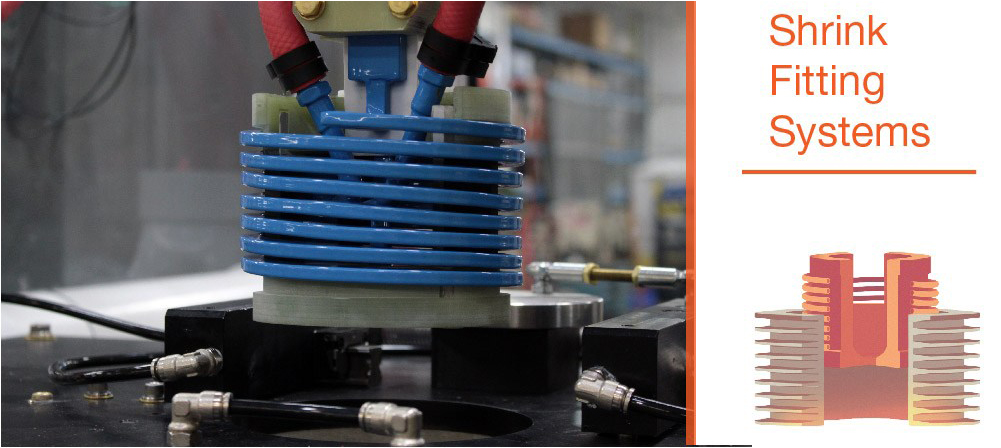Shrink Fitting With Induction

What is Shrink Fitting?
Shrink fitting is a very simple process that takes advantage of the tendency of materials to expand when heated. Usually, shrink fitting involves inserting a room temperature component into another component that has been heated. The room temperature component is able to be inserted with relative ease because the heat has caused the mating surface of the second component to expand slightly. After insertion, the components are allowed time to cool. This cooling causes the mating surface to contract around the first component and form a non-permanent mechanical bond.
Each method of securing parts in an assembly has unique advantages. In the case of shrink fitting, parts made from any metal can be assembled: steel to steel, steel to copper, aluminum to steel, magnesium to steel, etc. Shrink fitting is done at a relatively low temperature which mitigates changes in the metallurgical structure and avoids oxidation. No cleaning is required after assembly because of this. Shrink fitting is also able to be reversed easily and without damaging the components by selectively heating the outer component causing it to expand again.
Advantages of Induction Shrink Fitting
Induction heating technology lends itself well to shrink fitting because it offers precise control and rapid heating times. Heat can be focused locally so as to only affect the area immediately around the matting surface. This saves energy when shrink-fitting with large components because the entire part does not need to be heated. It also helps prevent distortion and cracking caused by repeated heating and cooling making induction ideal for components requiring frequent disassembly and reassembly. Rapid heating times mean that production efficiency can be maximized. Induction processes produce a repeatable and consistent result which makes it easy to incorporate automation.